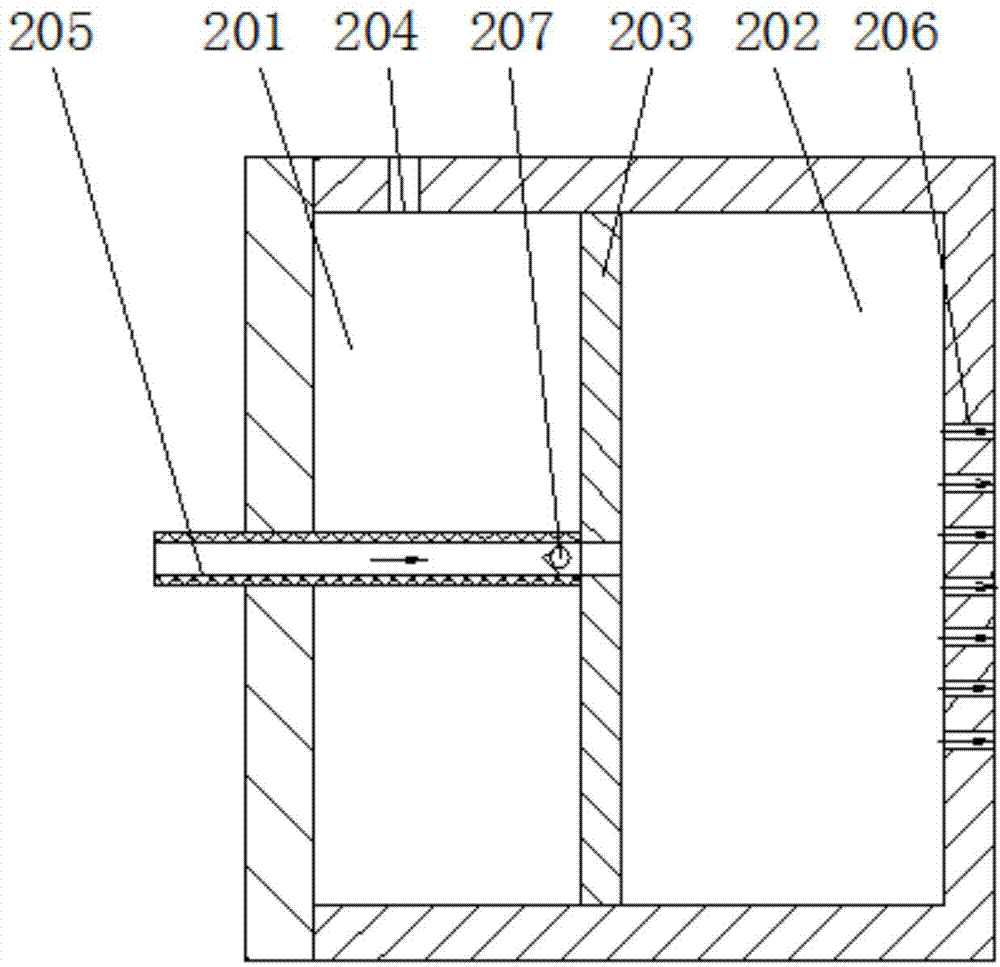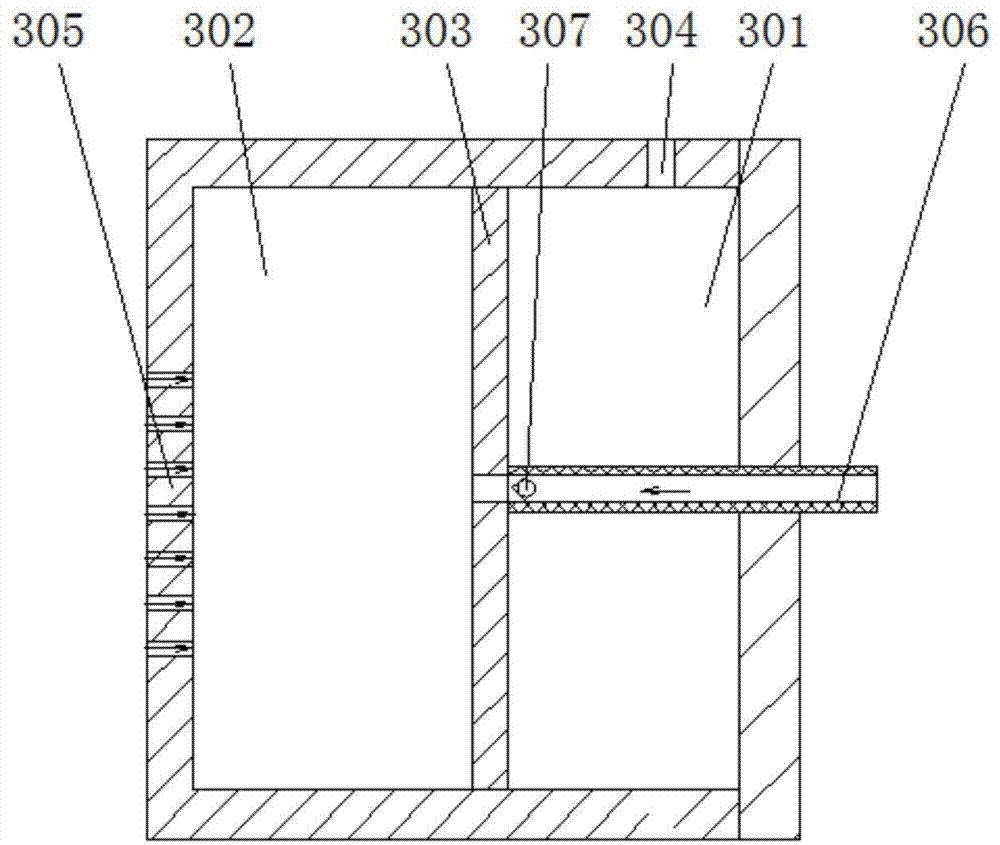Sub-THz nano-biosensor for quickly frame-detecting bacteria and detection method thereof
A biosensor and sub-terahertz technology, applied in the field of sensors, can solve problems such as the inability to identify single-cell spectral signals and the inability to detect single-cell terahertz light sources, so as to solve the problems of sensitivity and specificity, reduce the volume of original sample liquid, Effects without marking
- Summary
- Abstract
- Description
- Claims
- Application Information
AI Technical Summary
Problems solved by technology
Method used
Image
Examples
Embodiment 1
[0042] Such as Figure 1 to Figure 3 As shown, one of the sub-terahertz nano-biosensors used for rapid frame detection of bacteria in the present invention includes a microfluidic unit and a slot nano-antenna 4, and the microfluidic unit includes at least one microfluidic body 1 in a tubular structure, arranged on The positive pressure generating device 2 at the cell inlet end of the microfluidic body 1, and the negative pressure generating device 3 arranged at the cell outlet end of the microfluidic body, the positive pressure generating device generates positive pressure, and the negative pressure generating device generates negative pressure. Next, the cells of the cell solution are pushed into the microfluidic body 1 to realize the detection. The slotted nano-antenna 4 is provided with a long and narrow groove 5 that runs through the antenna body, and the microfluidic body 1 passes through the long and narrow groove 5 one by one. When the cell to be tested passes through t...
Embodiment 2
[0051] Such as Figure 4 As shown, it is an embodiment 2 of the sub-terahertz nano-biosensor for rapid frame detection of bacteria, which is one of the present inventions. The difference from embodiment 1 is that the microfluidic body 1 is set as a Y-shaped structure, that is, the microfluidic body 1 is arranged in a Y-shaped structure. The negative pressure generating device 3 is merged into a unified channel before being connected, which is convenient for centralized processing of multiple microfluidic body 1 pipelines to form a negative pressure structure, and the cell solution is easier to enter the microfluidic body 1, and the effect is better. Other structures are identical with embodiment 1, different Ao states here.
Embodiment 3
[0053] Such as Figure 5 For Example 3, the difference from Example 1 is that the microfluidic body 1 is set in a U-shaped structure, which can increase the length of the microfluidic body, and it is easier to disperse a certain number of cells to be tested, which is conducive to the entry of the cell solution Microfluidic body 1, the effect is better. Other structures are the same as in Embodiment 1, and will not be described here again.
[0054] Two, the second of the present invention: a detection method using the sub-terahertz nano-biosensor for rapid frame detection of bacteria, its operation steps:
[0055] 1) Fully dilute the sample solution;
[0056] 2) pump the sample dilution prepared in step 1) into the microfluidic unit with a micropump;
[0057] 3) The positive and negative pressure generating devices in the microfluidic unit are activated, and the sample dilution is sent into the microfluidic body;
[0058] 4) Confirm whether the cells in the sample dilution ...
PUM
 Login to View More
Login to View More Abstract
Description
Claims
Application Information
 Login to View More
Login to View More - R&D
- Intellectual Property
- Life Sciences
- Materials
- Tech Scout
- Unparalleled Data Quality
- Higher Quality Content
- 60% Fewer Hallucinations
Browse by: Latest US Patents, China's latest patents, Technical Efficacy Thesaurus, Application Domain, Technology Topic, Popular Technical Reports.
© 2025 PatSnap. All rights reserved.Legal|Privacy policy|Modern Slavery Act Transparency Statement|Sitemap|About US| Contact US: help@patsnap.com



